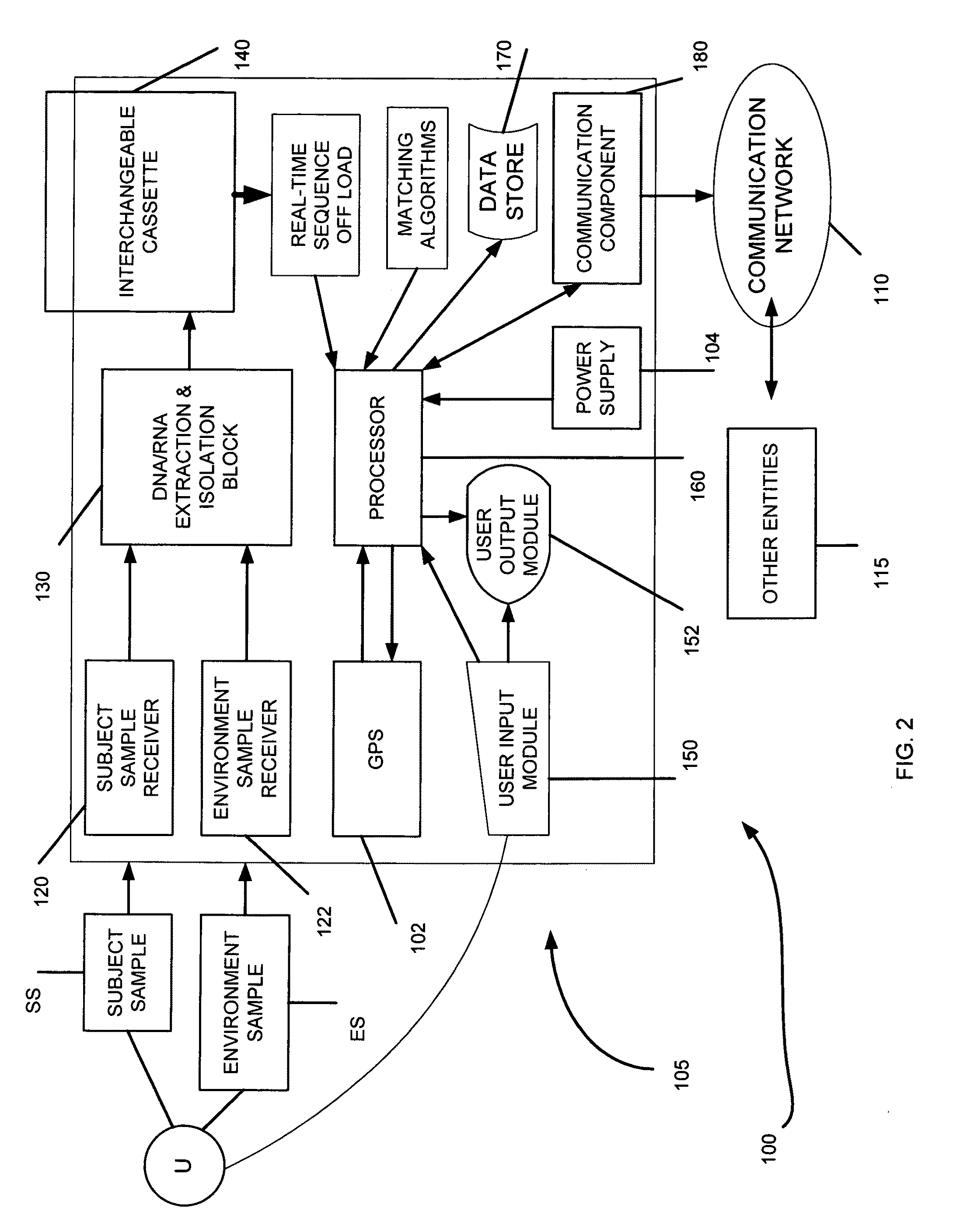Genome identification system
a gene identification and system technology, applied in the field of system and methods for the identification of organisms, can solve the problems of requiring too much time, affecting the rapidity and accuracy of the identification process, and little progress in building devices to quickly identify the sequence [information] and transfer data more efficiently and effectively
- Summary
- Abstract
- Description
- Claims
- Application Information
AI Technical Summary
Benefits of technology
Problems solved by technology
Method used
Image
Examples
example 1
[0110]Purpose: The use of key signatures and / or bar codes to enable genome identification with as few as 8-18 nucleotides and analysis of very short sequence data (reads) in real-time.
[0111]Linear time suffix array construction algorithms were used to calculate the uniqueness analysis. The analysis determined the percentage of all sequences that were unique in several model genomes. All sequence lengths in a genome were analyzed. Sequences that occur only once in a genome are counted. The suffix array algorithm works by calculating a repeat score plot which analyzes the frequency of specific subsequences within a sequence to occur based on a two base pair sliding window. Genome information stored in GenBank was used for the in-silico analysis. A viral genome, Lambda-phage, a bacterial genome, E. coli K12 MG1655, and the human genome were analyzed. The percentage of unique reads is a function of sequence length. An assumption was made concerning the sequences that only produce unambi...
PUM
 Login to View More
Login to View More Abstract
Description
Claims
Application Information
 Login to View More
Login to View More - R&D
- Intellectual Property
- Life Sciences
- Materials
- Tech Scout
- Unparalleled Data Quality
- Higher Quality Content
- 60% Fewer Hallucinations
Browse by: Latest US Patents, China's latest patents, Technical Efficacy Thesaurus, Application Domain, Technology Topic, Popular Technical Reports.
© 2025 PatSnap. All rights reserved.Legal|Privacy policy|Modern Slavery Act Transparency Statement|Sitemap|About US| Contact US: help@patsnap.com



